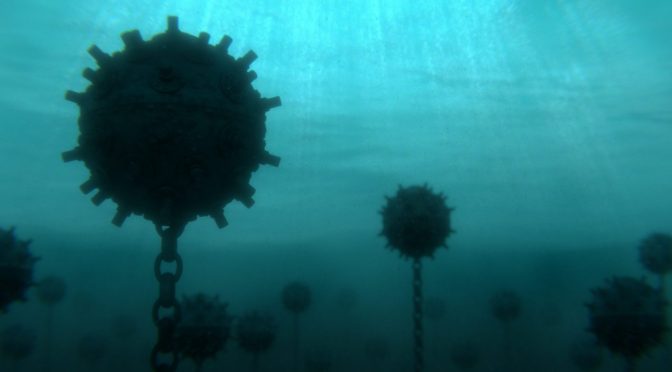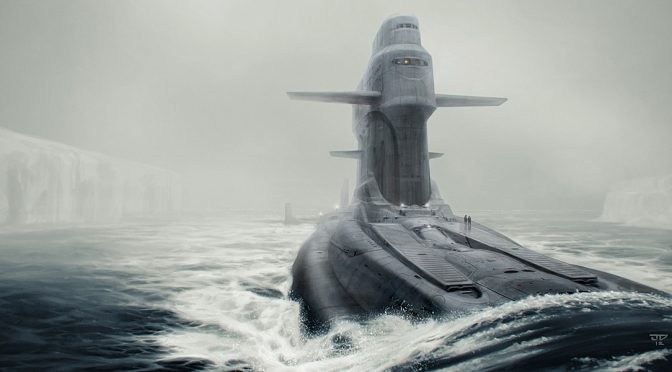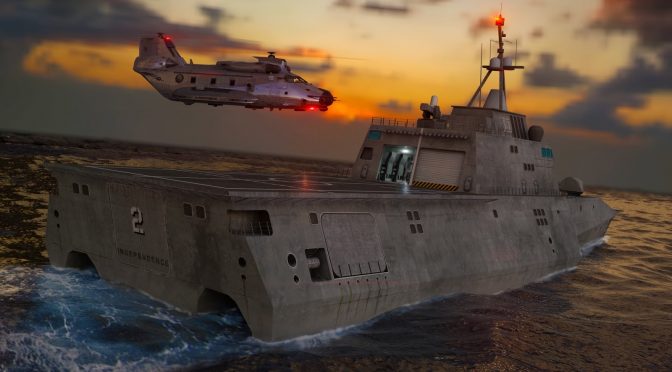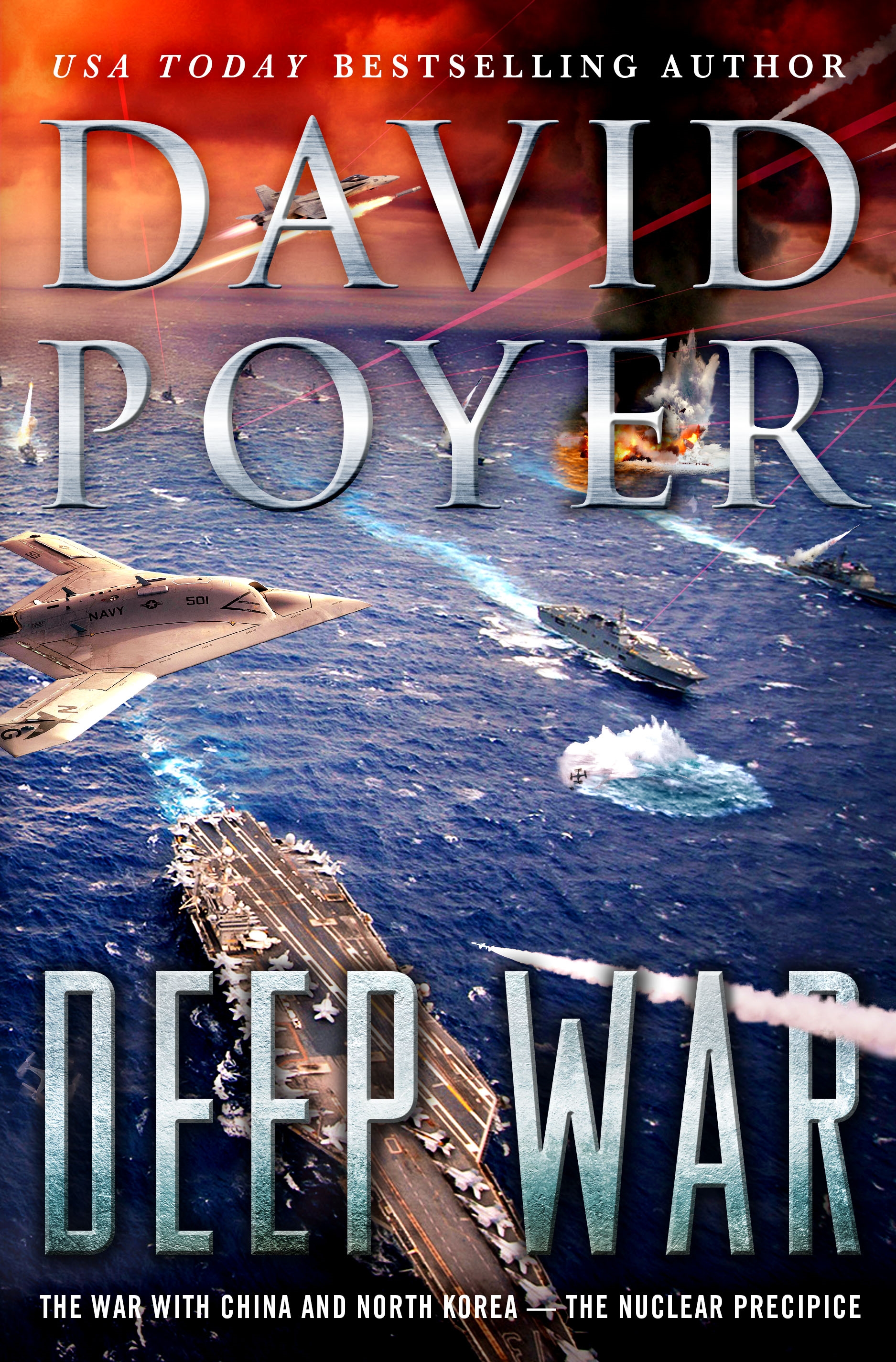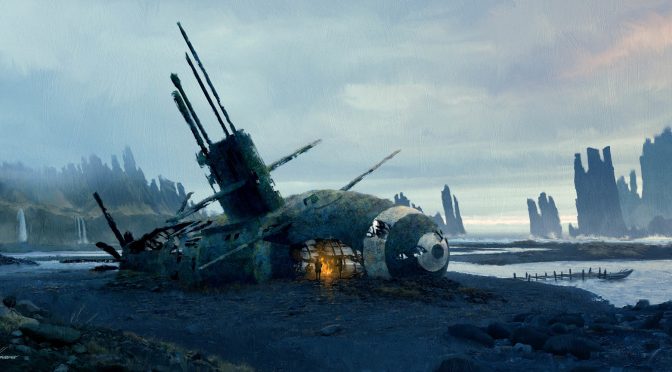By Patrick Van Hoeserlande
YEMEN TILL 2027
The Yemeni Civil War was an ongoing conflict that began in 2015 between two factions: the then-incumbent Yemeni government and the Houthi militia, along with their supporters and allies. Both claimed to constitute the Yemeni government. Houthi forces controlling the capital Sana’a, and allied with forces loyal to the former president have clashed with forces loyal to the government based in Aden. Al-Qaeda in the Arabian Peninsula (AQAP) and the Islamic State of Iraq and the Levant have also carried out attacks, with AQAP controlling swaths of territory in the hinterlands, and along stretches of the coast.
On 21 March 2015, after taking over the capital Sana’a and the Yemeni government, the Houthi-led Supreme Revolutionary Committee declared a general mobilization to overthrow Hadi and further their control by driving into the southern provinces. A week later they reached the outskirts of Aden, the seat of power for Hadi’s government; Hadi fled the country the same day. Concurrently, a coalition led by Saudi Arabia launched military operations by using airstrikes to restore the former Yemeni government; the United States provided intelligence and logistical support to the campaign.
Notwithstanding warnings from the United Nations (UN) that 13 million Yemeni civilians faced starvation in what it said could become “the worst famine in the world in 100 years,” this war claimed 30,000 dead and hundreds of thousands as a result of a year-long famine.
Finally, in 2021, the fighting fractions came to an agreement on how to govern the nation. With all infrastructure destroyed and institutions neglected, the United States Security Council (UNSC) agreed on the United States Security Council Resolution (UNSCR) 3001 creating the UN Mission for Rebuilding Yemen (UNMRY). The mission’s HQ was in Aden chosen for its symbolic value and its port.
Acknowledging the fragility of the ceasefire agreement between the warrying parties, the UNSC requested NATO to provide the forces for an emergency evacuation of a minimal staff. Although, the UN had plans to reduce, in case of raising tensions, the in-country staff to less than 250, there were indications that in case of an evacuation, more people, not related to the UN mission, would try to get a lift out. Although NATO as the most powerful and cohesive alliance could not refuse such a request, it took the North Atlantic Council (NAC) two months to answer positively.
Soon after the UN started its preparation to deploy the mission, NATO stood up amphibious Task Group Yankee (TG-Y). The vicinity of the port led to the decision that an evacuation via the harbour had the best chances for a flawless evacuation. Due to resource limitations, TG-Y was not a permanent group but assembled during collective training and exercise periods followed by periods wherein the group was spread across the globe. However, nations providing the troops had assured that the group would be ready when needed. To further reduce the burden on the troop-contributing nations, TG-Y was kept on a flexible readiness status in relation to the assessed risk on the ground. An unannounced readiness test by SACEUR showed that the majority of the ships were indeed at the requested readiness, although some nations had stretched the interpretation of readiness.
After the turn of the year 2027, troubles again started in Yemen. Assessing the risk in the first half of that year was troublesome work. As a result, the readiness of TG-Y fluctuated throughout that period. SACEUR urged the participating nations to increase the number of exercises to assure interoperability, and, not spoken out loudly, the readiness of the group. By the end of May, a Houthi militia splinter group threatened a possible evacuation of the UN mission leading to an UNSC decision to initiate the operation. The NAC responded quickly by activating the Execution Order for the Evac Ops SUNNY SALAMANDER.
NORTHWOOD
In the weeks before the NAC decision, MARCOM’s Ops Centre and in particular its Naval Mine Warfare Coordination Unit (NMWCU) had already started preparing the battlefield. Closely following-up the crisis, they knew it was a matter of weeks for the ‘go ahead’ and they did not want naval mines to spoil the timeline.
Fregatkapitein (BEL) Samantha (Sam) Vleugels was the commander of this small unit and the first Belgian NMW officer trained solely in the use of Maritime Unmanned Systems (MUS). She was one of the first members of the growing group of maritime officers who had never sailed on a manned minehunter ship. Yes, she had done her time aboard, but these ships were not specially designed solely for mine warfare. They were all multipurpose platforms or ships of opportunity. The new mine warfare systems could be deployed from almost everywhere, even on land.
Her Norwegian colleague Flaggmester (NOR) Thorben Jørgensen had served several years on a minehunter. He had loved looking for mines along the Norwegian coastline. Although the latest generation of ships used MUS to ease the task, his adventurous spirit told him that it was more fun to feel the present danger of mines. He was good at his current job, but would immediately go for another tour out there in the icy cold. The rainy weather typical for the British Island made Northwood not an ideal place for a Norwegian sailor to live.
“COMMARCOM asked me to make sure that TG-Yankee can operate safely in the waters around Aden,” she told the chief.
“PSA Charlie did a sweep two months ago. The group is now busy along the Somali coast. We could send them for another run,” he replied. Persistent Surveillance Glider Group Africa Charlie, in short PSGGAC but commonly referred to as “PSA Charlie,” was a loose collection of gliders specialized in seabed mapping. They did not really look for mines, but by using their data and comparing the different surveys over time, artificial intelligence could detect potential targets and classify those targets that were most probably mines, historical or new ones. This kind of information was crucial to assess the mine threat and to prepare a quick countermeasure plan.
She had considered that option too, but found it not sufficient in the light of the events on the ground. “Let’s do that and also retask WTF Africa 05.” Wave glider Task Force Africa 05 (WTFA05) was a group of Mine Hunting MUS (MHMUS) under the control of a wave glider. The latter served as the link between NMWCU and the underwater drones and as a charging station. The central point of WTFA05 was a new type able to operate covertly. It only deployed its antenna when necessary and, if needed, it could dive for a short period. That made it ideal to prepare an amphibious landing zone.
“Good idea. It will take them some days to be on station, but consider it done.” Thorben turned his chair towards the computer screen and formulated the task to both groups. He did not have to command every asset individually, no, he just had to formulate the task of the two groups and the planning software proposed a Course of Action (CoA). If the levels of risk and the operational elements were within the task parameters, he told the AI he agreed with the assessment and things got started. The software decided on the number of assets to retask, ensuring that old and new tasks were executed according to the stated parameters.
Just for his awareness, he requested the computer to run a simulation of the proposed CoA. He also had a look at the risk maps based on the last survey of PSA Charlie and interacted with the AI to prioritize some promising corridors for demining. Happy with the result, he called it a day.
Vleugels and Jørgensen felt successful when they heard that Ops SUNNY SALAMANDER was initiated. It was the first time that the new concept was put to a test and they already scored. In the old days, only a mine hunter TF could be sent to the area. As these ships were not made for speed, the first part of the operation would already have delayed the whole operations. Speed was of the essence and this time the naval mine threat would not delay the action.
“The assumption of the plan was that TG-Y would sail to Yemen via the Suez Canal, but because they are on exercise in the Atlantic the fastest transfer is via the Arabian Sea. PSA Charlie did a survey there and we can use ‘Ocean of Data’ to identify potential mines in the route, but we lack a minehunting capability,” concluded Sam. “Ocean of Data” was a database of oceanographic data maintained by a company using civilian MUS. Although not as detailed as the military’s own, for deeper waters this data was good enough. Because NATO provided unclassified data collected with the national MUS, the unit had easy access to this database through a partnership agreement.
“The task group does not have a minehunter with them. There are no ships in the vicinity that we can use as a vessel of opportunity,” answered the chief.
“Let’s broaden our possibilities. Does AIRCOM have access to MHADs?” she replied. MHAD or Mine Hunter Air Delivered was an underwater drone designed to be dropped by almost any aircraft or helicopter. This made it an ideal asset for speedy delivery of a minehunting capability.
He started a search in the database of stand-by capabilities and answered:” Yes, AIRCOM has MHADs available. France has offered them for the current stand-by period.”
“OK, send AIRCOM a request for support and make sure that SHAPE is in CC,” she ordered. While he launched the request, something was bothering her. Not all mines were huntable. Having only minehunter drones in the area would not be enough.
“Chief, are there minesweepers in the area?”
“Negative. No ships, no drones,” while he kept on typing, “but … the USS Michigan is not that far away.”
“Does she carry LBMS?” LBMS or submarine-launched Large Body Mine Sweepers were torpedo-like workhorses designed to tow a minesweeping array. Before the chief could give her answer, she was heading to the submarine warfare unit. Sam knew that he could not answer her question because that kind of details on subs were not readily accessible, and even if they were, she had to ask her colleagues to get out the task.
USS Michigan
The USS Michigan, commissioned in 1982 and the third ship to bear the state’s name, was a United States Navy Ohio-class nuclear powered ballistic missile submarine converted to a guided missile submarine (SSGN-727). Later she had undergone a modification to accommodate special weapons and to serve as a mothership for unmanned underwater vehicles.
After they had changed their course toward the Arabian Sea, they arrived at their firing position. Although they would not fire the sub’s normal weapons, the crew used the standard tactical vocabulary.
“Tubes one and two ready, sir.”
Captain (USA) Jean-Jacques Smith smiled when he heard the reply. His parents were both vivid divers and they named their son after the famous French diving pioneer Cousteau. Their love for the underwater world had turned his gaze towards the silent world of submariners. The mystery of the dark held him in its grasp.
A second “Sir?” brought him back to the task at hand.
“Launch number one.”
A metallic sound followed by a whoosh marked the departure of the first LBMS.
“Torpedo one away.”
“Confirmed. LBMS one is active.”
“Launch number two.”
“Torpedo two away.”
“LBMS two also active.”
“Confirm the launch to HQ and bring us back to our holding station.”
“Aye, sir.”
His order was further translated to the different stations of the sub. The highlight of the day was over, now they had to make sure that the sub slipped quietly into obscurity without any detection.
NORTHWOOD
The night shift briefed on the successful launch of the LBMS and the preparation of a German A400M sub-strategic airlifter to drop the MHADs. They confirmed that the robotic sweepers were already sweeping mines cooperatively on the far segment of the approach to Aden.
When Sam entered the area of her unit, Thorben had verified the activity of the two minesweepers. The first elements of WTFA05 were already busy hunting mines in the last leg of the sea route and PSA Charlie was active in other potential landing zones. Things were going well.
“What’s the status of the A400M?”
“According to the Info from EATC the aircraft will leave at 1000 for Cazaux Air Base to pick up the two DHAMs.” The European Air Transport Command or EATC was a single multinational command with its headquarters located at Eindhoven Air Base, the Netherlands. The fleet of over 300 assets were located at the national air bases through the twelve member nations.
She looked at her watch and decided they still had some time. “The Task Group wants a minehunter ship in front of them and the admiral agreed to it.”
“But that doesn’t make sense. The drones are doing a good job. The route will be clear. They don’t need a ship.”
“I know, but the old guys don’t trust what they don’t see. They want a ship to feel safe. The Mine Warfare advisor Captain Wiegmann could not convince his COMTF, so we have to stick to the task.”
“The German captain is a decent guy and a great specialist. If he was not able to turn the decision, nobody can,” answered the chief.
“Do you know him?”
“Yes, I worked with him during exercise ARTIC MINE. Great commander.”
“Then you will be glad to see him because he is online now.”
That moment Kapitän zur See (DEU) Rolf Wiegmann’s face appeared on the right screen. He was an old-school mine warfare specialist but experienced in the use of new technologies.
“Hi team. I guess you have heard about my admiral’s request?”
“Yes commander, we are aware of it.”
“Any proposal on how to get a ship for us?”
“There are no ships around. Not even an ‘Old Lady,’ so we have to go for another solution,” said Thorben. Sam did not like the expression “Old Lady” for a worn-out, stripped ship equipped for (semi)autonomous operations in a minefield. These ships, small or big but always old, could be used as minesweepers but also as a quick and dirty test for the presence of mines. Through the years she had accepted that sailors talked about a ship as a ‘she’ and that there was nothing odd about that. But, sending an old lady unprotected into a minefield was still hard to accept.
“Looking at the characteristics of the local seabed, an ABNL – the Belgian-Dutch maritime cooperation – ship would be perfect because she could be used to assist the landing if necessary. The Dutch and the Belgian are accustomed to operate in sandy conditions,” Sam declared with some proudness in her voice. The chief picked up that tone and knew she was right. His navy was specialized in rocky coasts, but these were not found around Aden.
“They are too far away to be on time. Their operational ships are participating in the live clearing activity in the Baltic Sea. Even if they turn around now and sail at high speed they will arrive after D-day.”
“Right,” she sounded a bit disappointing.
“We have a Portuguese Fast Multi-purpose Support Ship ready to sail out and join the naval exercise in the Mediterranean Sea. If we ask it to sail through the Suez Canal, it could join the task group in time,” proposed Thorben.
“Let’s do that,” replied Rolf. “What about the mine clearing module? I know the Portuguese don’t have those yet.”
“We could ask Den Helder to provide us with one of their modules. If we fly the container to Port Said International Airport, the Portuguese ship could pick it and the crew up,” proposed Sam regaining her enthusiasm.
“Great idea,” confirmed the chief.
“Okay, team, keep me posted and if you need my support, don’t hesitate to call me. Rolf out.”
“Nice to have this figured out.”
“I’ll talk to my national chain of command; can you take care of the Airbus for me?” Sam asked.
“Already busy with it.”
AIRBUS A400M
After the pick-ups in Melsboek, Belgium, and Cazaux, France, they had been flying to Said. A quick stop to drop of the mine clearance module and its crew of six, they refuelled the plane and took off again. According to their flight plan, their current leg would soon end above the Red Sea.
A buzzing sound announced the opening of the cargo door. The noise of the four turboprop engines swelled and filled the cargo bay. The crew chief looked down and saw the inviting surface of the Red Sea. It was dark and there were only distant lights. Good, nobody is watching was the thought that went through his mind.
“Cargo door open and locked. Ready to drop.”
“Roger that,” responded the pilot.
The red light went on indicating that the loadmaster had to start the final check. The parachutes were hooked on. The cargo clams blocked in the right direction. Nothing visible that could hamper the release.
A nightly parachute extraction drop was always spectacular and dangerous. Once the main release handle was pulled over, there was no stopping to it. Everything, intentionally or not, attached went overboard. The two air force specialists had no intention to drop something else except the two DHAMs. They did not really know the purpose of this drop. They did not care. Their task was to execute a clean drop.
The orange light went on. Instinctively they both stepped back into safety.
“Crew chief clear.”
“All clear in the back.”
Green light.
Immediately, the loadmaster pushed the handle and the parachute left its storage place. Taking air at high speed, it instantly deployed fully and with a hard jerk, it yanked the container out. They could hear the noise in their active noise reduction headsets. They both witnessed the white splashes of the two DHAMs, but lost all sight of the black chute.
“Closing door.”
“Going home,” replied the pilot.
TASK GROUP YANKEE
“All systems functioning as planned. Sea approach cleared above requested confidence level,” stated the report.
“The Portuguese ship will join us in the afternoon. Everything will be ready for the evacuation, admiral,” concluded Rolf in his briefing.
“Job well done, Rolf. Thank MARCOM for me,” responded COM TASK GROUP YANKEE.
NORTHWOOD
“Our German captain sends us thanks from his boss. A job well done,” said the chief. It was the first time that they had used the new concept of MCM operations to prepare an amphibious operation. All those years against critics finally paid off. The underwater drones enhanced by AI did what they were supposed to do.
Suddenly the screen flashed red. A red rectangle warned them about an explosion. This warning came from the wave glider of WTFA05. Its hydrophones had picked up the noise of the explosion. The next line informed the unit that MHMUS 04 was damaged and sinking to the bottom. Chief Jørgensen started the forensics diagnostics program to have a better idea of what just happened.
“It looks like a commercial ship was leaving the port while MHMUS 04 was busy neutralizing a mine. The ship must have come too close to the mine, so 04 decided to let it explode before it could finish the job,” explained the chief.
“Why did it do that?” wondered Sam, although she knew the answer.
“We think that these drones do that to protect the ship and prevent collateral damage, but we’re not sure. Their program has learned it that way and the manufacturer left it as it was,” Thorben explained. Sam knew that was half the truth. The manufacturer had no idea how the AI-based software had come to that conclusion and was unable to de-program it. AI was not a rule-based software but the result of endless iterations of data interpretation cycles. Changing the outcome was not as easy as changing a line in the software.
“Nothing we can do about it. Note that we have to pick up the damaged drone in the near future. A task for the Portuguese?”
“OK, I will launch a request for that,” answered the chief.
“I wonder how the other side will react to that incident.”
TASK GROUP YANKEE
“Good morning team,” said Rolf.
“Good evening. You have read our report on the explosion?” asked Sam.
“Yes, thanks for that. Any changes?”
“No, no reaction from the other side as far as we can detect.”
“Okay. Our MQ-10 is on station. I’m forwarding its feed to your station now.” The General Atomics MQ-10 Havoc (sometimes called maritime Reaper) was an unmanned aerial vehicle (UAV) capable of autonomous flight operations developed primarily for the United States Navy. The MQ-10 was an improved version of the MQ-9 hunter-killer UAVs and designed for long-endurance, high-altitude armed surveillance.
“We have it. Thanks,” replied Sam. “Can you fly over SIERRA beach? We want to see if there are mines in the breakwater zone.”
The drone operator changed the course a bit and swept the camera towards the beach where the special operations team would go ashore.
“There, and there, and maybe here,” said Thorben while his pointer went over the spots on the image from the camera. “Possible UWIEDs.” The homemade naval mines or Underwater Improvised Explosive Devices were placed to prevent an assault from the sea. Because they were positioned in the breakwater zone, they were hard to detect with a MUS. The UAV’s multispectral camera was a great help to detect possible mines in shallow water.
“There is a truck on the beach,” announced Rolf.
Immediately the operator zoomed in on the truck. All saw the cargo in the back of the truck. They all thought the same: more UWIEDs.
“Should we destroy the truck?” asked Sam.
“Yes, they could add more mines. We can hit it with our gun,” proposed Rolf.
“Wait a moment!” It was the chief. “Can you hit this spot first,” he said while marking a spot in the shallow water of the beach, “and then walk towards the truck?” On the second screen they could see the map with estimated mine threats. There was a dark green area running to the indicated spot. They understood that the requested firing pattern would clear possible UWIED in the breakwater. It would open a safe passage for the SOF team without giving the intent of clearing an infiltration path away.
They heard a long drumming sound and a moment later, the camera filmed the effect of the rapid fire. Water spewed up followed by a destructive trail towards the accelerating truck that ended up in a ball of flames. It was a beautiful but deadly spectacle.
With an alarming sound, a red text popped up: POSSIBLE ONGOING MINE LAYING OPERATION DETECTED. “Helvete! Can you turn the camera to the entrance of the port?” asked the chief in disgust.
The screen turned blurry to stop with an image of the inlet. Without being asked, the drone operator zoomed in on the deck of the ship. They were witnesses of the drop of another sea mine. There were still some mines left on the small ship. If they would allow this crew to continue their activity, their preparatory clearance work would be in vain and the whole evacuation operation would have to be postponed. This in turn would increase the risk for the UN staff.
“Deal with it!” Rolf requested without consulting the others. The operator threw a quick glance at her mission leader who gave an approving nod. Two seconds later Fox 1, an advanced small calibre air-to-ground missile, left its rail. The missile rushed towards its target turning it into a burning wreck. The secondary explosions were violent witnesses that the ship’s cargo of sea mines were destroyed as well.
They did not have time to enjoy this little victory as Thorben announced that the computer estimated that the Houthis probably had dropped four sea mines. Enough to delay the operation with some days depending on the type of mines. “Our gunfire must have shielded the noise of their sneaky activity,” he concluded.
Disappointment quickly followed victory. The two operation centres turned quite.
With “Can you show me the results of the surveillance by PSA Charlie?” Sam broke the loud silence.
“Sure thing.”
“Right, have a look at the beach to the East of Little Aden.” All eyes followed the move to the East. Sam zoomed in. They all recognized the way out. There was a stretch of at least 200m of dark green on the chart. An amphibious landing zone. “Go where there are no mines” was one of the catchphrases in the concept. A pass by the MQ-10 would confirm the absence of UWIEDs in this breakwater zone. The operation on the ground would be a bit more complicated, but it was doable within the planned timeframe.
“Quick thinking team,” were the thankful words spoken by Rolf.
“Thanks. It’s part of the job description.”
“Nevertheless.”
“Does the task group still need the Portuguese ship?”
“Why do you ask?”
“Well, this little action we had, made me think. We can use it to reinforce their idea that we will use the port for exfiltration and recuperate the damaged MHMUS 04.”
“Elaborate,” asked the captain.
IN THE VICINITY OF ADEN
After the captain had explained their deception plan to his commander, the multipurpose ship with the ABNL modules sailed toward the port of Aden. At a safe distance, the crew put up a good show of a demining operation. They even ignited an old sea mine to increase the theatrical effect.
Observers of their activity at sea quickly concluded that the Houthis had at least five days before the port would be accessible. Time enough for their own plans.
However, the real activities under water had no relations with this show. Mine hunter drones were widening the green zone of SIERRA beach while another drone salvaged the damaged number 4.
As planned, in the middle of the night the SOF team came ashore and organized the evacuation. The surprise was complete and all staff evacuated safely and without real incidents.
BRUSSELS
The Secretary General read the UNSC letter felicitating NATO for the flawless evacuation of its staff out of Yemen. Listening to the diplomatic sentences, Captain Wiegmann reflected on the excellent work of the team and the value of the new concept. In the old days, this evacuation would have been much more difficult to pull off.
Major Van Hoeserlande (BEL Air Force) is an aeronautical engineer with thirty-five years active duty on the counter, including command tours and deployments in joint environments. His love for writing and storytelling started in high school and has never panned out. As a diver-editor most of his articles are about underwater adventures, but his interests include innovation, management, technology and travel. As from August 2018, he is concept developer in NATO’s Strategic Headquarter in Norfolk, VA and uses stories to illustrate conceptual ideas. The views presented are those of the author, and do not reflect the views of NATO or Belgium.
Featured Image: Underwater minefield by Juan Jose Torres.

